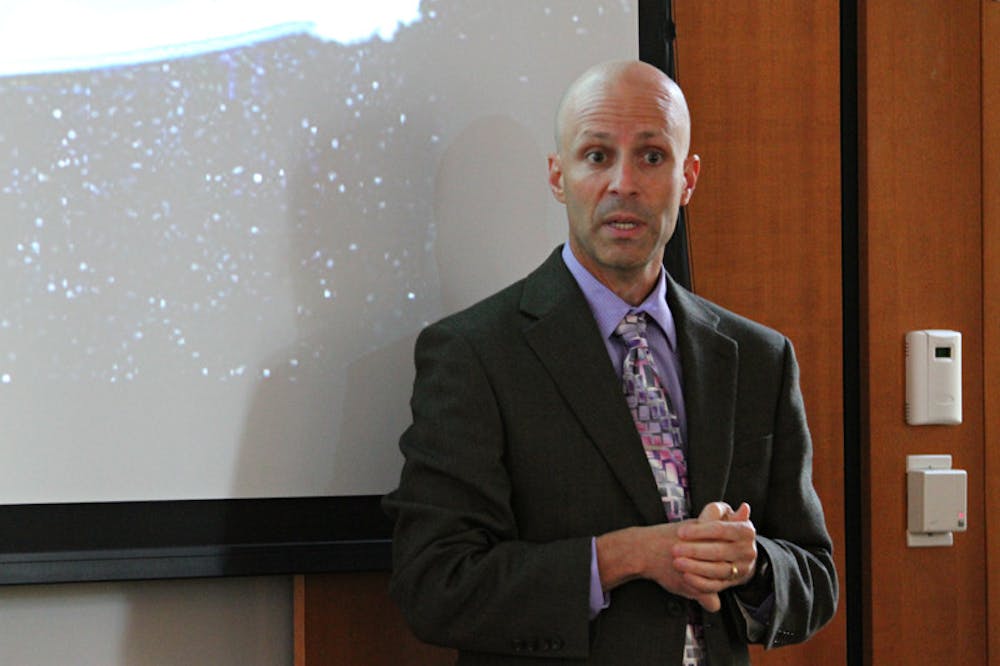When asked if they had seen “The Invisible Gorilla” video, a majority of hands shot up at last night’s visual perception lecture given by Daniel Simons, current head of the Visual Cognition Laboratory at the University of Illinois at Champaign-Urbana.
Simons collaborated to create the gorilla video several years ago to expose the limits of human perception. It has since gone viral.
Simons addressed an audience of over 100 yesterday afternoon describing his research in the field of visual cognitive science.
Visual cognitive science explores what is seen and how, but more importantly, it discusses what our intuitions are causing us to miss, Simons said.
“It’s one of the few areas of research that you can put people in a gorilla suit for science,” he said.
The video commands the viewer to concentrate on the movement of a ball being tossed. Meanwhile, midway through the video, a gorilla walks nonchalantly across the screen. According to the results of the study, there is a 50 percent chance you will never perceive the gorilla passing by.
“It’s a really powerful demo because it is very counterintuitive and forces you to confront your mistaken beliefs,” said Simons. The gorilla video — the most publicly-recognizable aspect of his research — demonstrates the inextricable relationship between expectation and perception.
Most visual cognitive science researchers study what can be seen and observed, but the focus of Simons’ research is what remains unseen as a result of trusting faulty intuition. “We miss what we are missing,” Simons said.
Fraud and inaccuracy in published scientific studies are often overlooked when readers accept the data presented but fail to critically question what data is missing, Simons said. To reach reliable claims, he said that results must be repeatable. By pre-registering and replicating studies, the scientific community will grow closer to producing research that more accurately represents the truth, he said.
“We don’t notice implausibility if it is consistent with our beliefs. We rely a little too heavily on our intuitions for what is plausible and what sounds right,” Simons said during the lecture.
“I find Dr. Simons’ work very important,” said audience member John McGeary, assistant professor of psychiatry and human behavior. “I’ve observed how our attention can be so manipulated, and I can see it in my own patients,” said McGeary, who said he was familiar with Simons’ work before attending the lecture.
Betty Peng ’17 also said she found the talk to be extremely beneficial. She is currently enrolled in a neurosystems class and attended the lecture to expand her knowledge of perception and visual science. “I’m not too sure what I was expecting, but I found that very interesting,” she said.

ADVERTISEMENT




